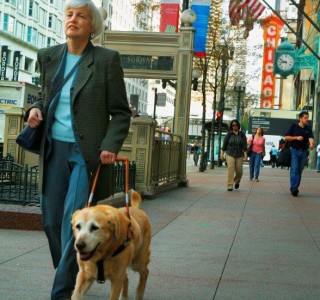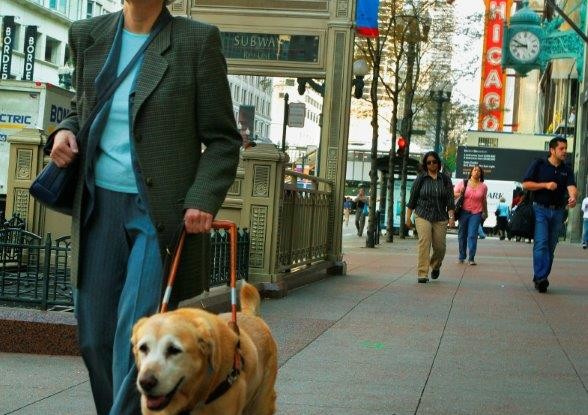
How Do Blind and Visually Impaired People Get Around?
Being blind or visually impaired doesn’t mean you automatically lose the independence of getting to and from places whenever you please. Several techniques and methods can help people get around safely regardless of their amount of vision. I will briefly talk about the different methods and how they work.
When in familiar places, visually impaired people generally know the layout and memorize where things are. Learning to travel in different or unfamiliar places is done by using orientation and mobility (O&M) skills. Orientation is the actual planning of how to get to and from places. Blind and visually impaired people use other senses – like sound, touch and smell – to orient ourselves to our surroundings. So, if I am walking outside and know there is a school nearby, then I can assume that it is near when I hear children playing and laughing. Likewise, the smell of freshly baked bread and cookies tells me I am near a bakery.
Memory is also important when traveling as a person without vision. We memorize important street names, locations, etc. Contrary to common belief, we do not count our steps! Those with low vision may use their other senses along with their remaining vision to get around.
Mobility is the physical traveling done to get to and from places. This includes walking, taking public transportation or even getting a ride from friends or family. Mobility devices are the tools we use to travel independently and safely from point A to point B:
- The white cane helps people who are blind or severely visually impaired know when there are tripping hazards such as cracks, poles, etc. The cane is swept from side to side to clear one’s path from these and other obstacles. Other techniques allow us to know when we’ve reached a crosswalk or the entrance to a room. The white cane also signals to drivers that the pedestrian about to cross the street is visually impaired.
- Guide dogs are service animals that have received special and extensive training to guide blind and visually impaired individuals. These dogs guide their handlers around obstacles and can also help find things like entrances, escalators and elevators. It is up to the handler to tell the dog where to go – it is only there to lead the person and help him or her arrive safely to the desired destination.
- A sighted (or human) guide is probably the simplest of all the methods, and is the proper way of assisting someone who may need help getting somewhere. A blind person is guided by someone else by holding on to their arm. This method is preferred by some of us when in unfamiliar places or if there are large crowds.
- Various technology devices are now making it easier for blind and visually impaired people to find their way around. We will cover this area in a future Sandy’s View post.
All of these methods are equally effective. There is no one right method for every person given that we all have different needs, preferences and lifestyles. Other types of accessibility features, such as audible announcements on buses and trains are of enormous help to people with visual impairments. While not everyone might need this type of assistance, it is great to know it is available.
What other methods or techniques help you get around as a blind or visually impaired person? Are there other accessibility features that help you be more independent in your travels? Please comment! You can also send any blindness and visual impairment related questions to sandysview@chicagolighthouse.org. Have a great weekend, and safe travels out there!






